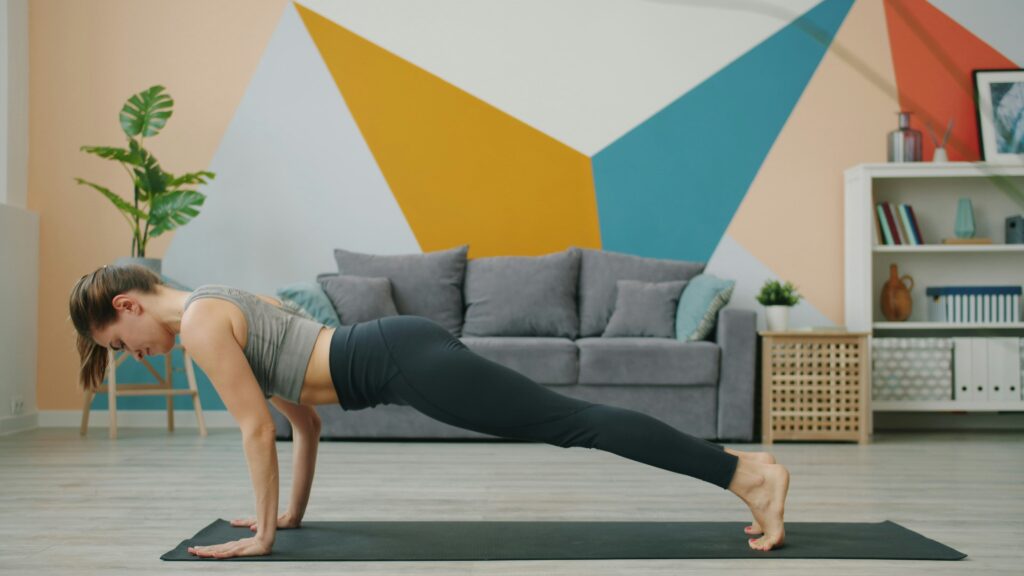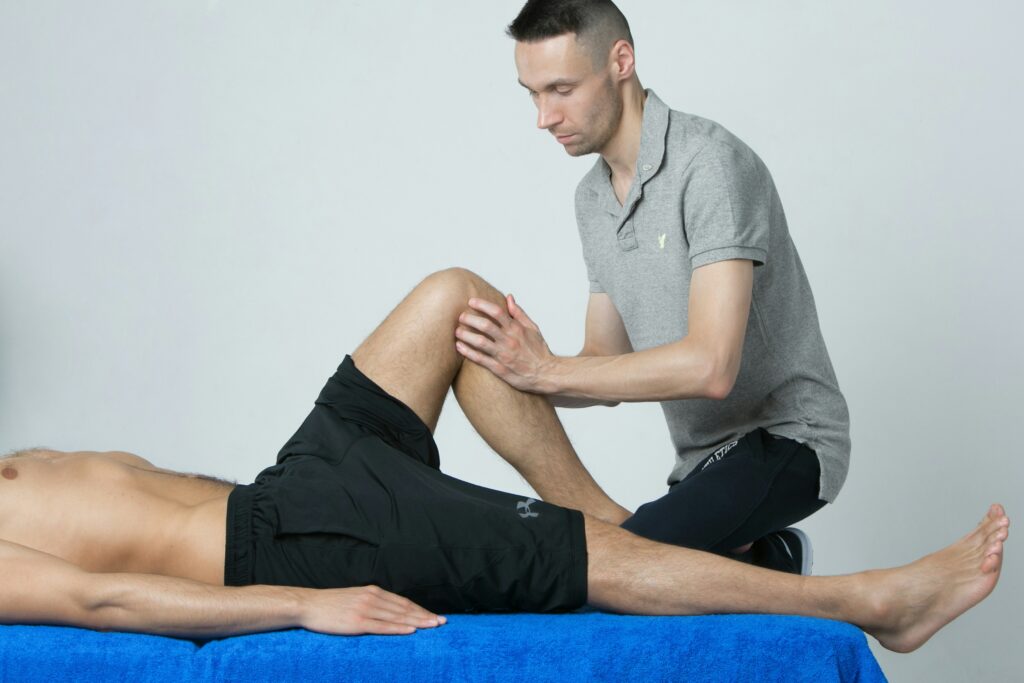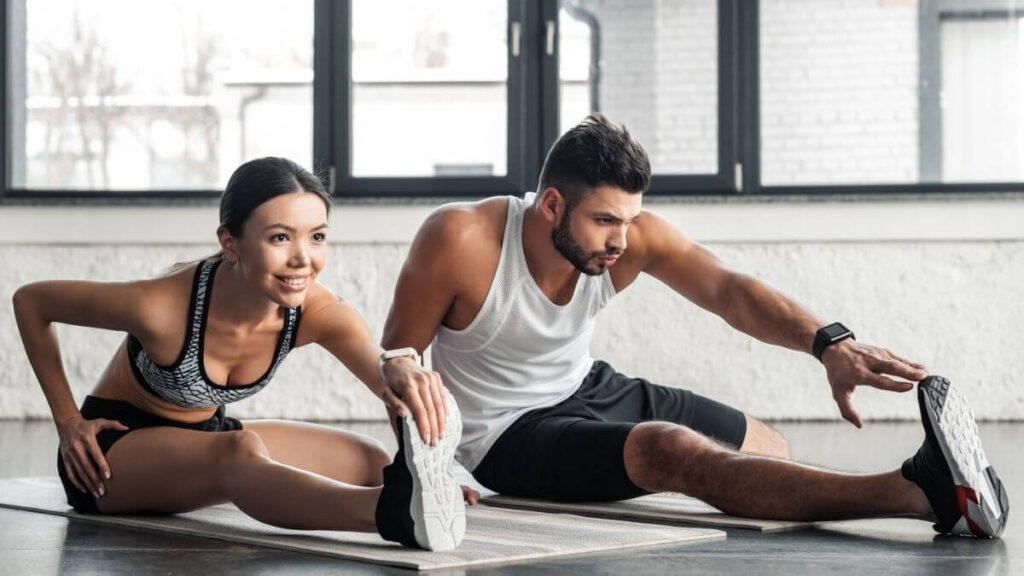Most people blame their back for all their pain, but the truth is often hiding in plain sight—your hips. Tight hips can sneakily pull on your spine, tilt your pelvis, and throw your posture completely out of balance. Think of your body like a puppet: when one string is too tight, the entire puppet looks awkward and stiff. That’s exactly what happens when your hips are locked up. Instead of moving smoothly, your lower back takes on extra work, leading to aches, stiffness, and even those annoying twinges that appear out of nowhere.

When hip muscles tighten, especially the hip flexors, they shorten and tug your pelvis forward. This forward tilt, known as anterior pelvic tilt, makes your lower back curve more than it should. Over time, the exaggerated curve creates pressure on the spine and discomfort that refuses to leave. It might sound complicated, but in reality, it’s just your body shouting, “Move me, please!” That’s why focusing on the best stretches to relieve hip and lower back pain makes a world of difference. Click here to start today
Sitting: The Silent Villain Behind Tight Hips
Let’s be honest—modern life practically trains us to have tight hips. We sit while working, sit while eating, sit while driving, and even relax by sitting on the couch for hours. All this sitting keeps your hips in a shortened position, making them stiff and unwilling to stretch out when you finally stand up. It’s like leaving elastic bands in the freezer; once you pull them, they snap and resist.

The longer you sit, the weaker your glutes become, forcing your lower back muscles to pick up the slack. This imbalance not only makes your back sore but also leaves you feeling stiff and tired even after a good night’s sleep. That’s why experts recommend small, regular movements and stretching breaks throughout the day. Just standing up, walking around, or doing a quick hip opener can prevent hours of discomfort later. Even better, practicing the best stretches to relieve hip and lower back pain can undo years of desk-bound habits and bring your body back to balance.
Why Your Back Suffers First When Hips Get Tight
You might wonder, “Why doesn’t hip pain show up before the back pain?” The reason is simple: your back is often the one overcompensating. When hips lose their flexibility, they refuse to handle the movements they’re supposed to. Instead, your back muscles and joints take over the job, even though they’re not built for it.
Imagine carrying groceries for your roommate because they refuse to lift a finger. At first, you manage just fine. But after a few weeks, you’re sore, cranky, and ready to explode. That’s exactly how your back feels when your hips stay tight for too long. The pain might appear during simple movements like bending, lifting, or even walking. This is why restoring hip mobility with regular stretching is not just helpful—it’s essential for long-term comfort. Consistently practicing the best stretches to relieve hip and lower back pain allows both areas to share the load instead of leaving your spine overworked and exhausted. Start your stretches today
The Bigger Picture: How Tight Hips Affect More Than Just Pain
The effects of tight hips aren’t limited to backaches alone. They can also reduce your range of motion, affect balance, and make everyday activities harder than they should be. Climbing stairs, tying shoes, or even reaching down for your dropped keys can suddenly feel like Olympic-level challenges. The less you move, the tighter your hips get, creating a vicious cycle that makes pain your unwanted daily companion.
Breaking this cycle means staying proactive. Instead of waiting for the pain to get unbearable, start incorporating mobility exercises into your daily routine. You don’t have to spend hours at the gym or on the yoga mat. Just ten to fifteen minutes of focused stretching can loosen up the hips and reduce the stress on your back. Think of it as a maintenance plan for your body, just like changing the oil in your car. Keeping things flexible ensures smoother movement and fewer breakdowns.
When your hips tighten, your lower back usually pays the price, even though it never signed up for the extra work. Tight hips pull your pelvis forward, creating an exaggerated curve in your spine that quickly leads to strain. This imbalance forces the back muscles to work harder, which is why you feel soreness after long hours of sitting. Imagine your body as a chain: if one link gets stiff, the rest eventually struggles to stay aligned.

Tight hip flexors often develop from everyday habits like sitting at a desk, driving, or lounging for hours on the couch. While these activities feel normal, they keep your hips locked in a shortened position for way too long. Over time, this constant sitting stiffens the muscles until they tug on your spine every time you move. That’s why your back cries out first, even though the problem quietly starts with your hips.
Why Sitting Turns Your Hips Into Stone
We live in a sitting society, where working, eating, and even relaxing usually involve a chair. The trouble is, our bodies were never built for such stillness. When you sit all day, your hips lose flexibility, making it harder for them to do their share of movement. Instead, the poor lower back steps in, taking over tasks that hips should handle with ease.
The result? Your back feels stiff, sore, and completely overworked. You might think the issue is your chair or posture, but often it’s your hips causing trouble. This is why simple lifestyle changes, like standing breaks or short walks, can help. Better yet, practicing the best stretches to relieve hip and lower back pain can restore balance and prevent discomfort before it becomes a daily battle.
How Tight Hips Overload Your Lower Back
Here’s the frustrating part: hip pain doesn’t always show up early, but back pain almost always does. That’s because your hips quietly refuse to move, and your spine tries to compensate. Your lower back is strong, but it isn’t designed to take on the entire workload of two stubborn hips.
Think of it like working with an unreliable teammate who skips half the tasks. You keep carrying the load until you finally break down. That’s what your spine experiences every time your hips tighten. Over time, this overcompensation leads to recurring discomfort and a cycle of pain that’s hard to ignore. Stretching helps retrain your hips to share the workload, giving your back much-needed relief.
The Ripple Effect on Daily Life
Tight hips don’t just make your back sore; they affect the way you move through everyday activities. Walking, bending, or even tying your shoes can feel harder because your body lacks fluidity. Reduced mobility also limits your ability to enjoy exercise or active hobbies, leaving you more frustrated and less energetic.
Even worse, tight hips can reduce circulation and create stiffness throughout your lower body, making you feel older than you are. That’s why stretching regularly isn’t only about comfort—it’s about keeping your entire body moving the way it should. Adding the best stretches to relieve hip and lower back pain into your routine can help restore energy, improve posture, and give your back a break.
Free Your Hips, Free Your Back
Your hips may seem innocent, but when they tighten, they quietly drag your back into a world of pain. By keeping them flexible, you prevent unnecessary strain on your spine and make daily life feel much smoother. The fix doesn’t require expensive equipment or hours of workouts—just a commitment to regular movement and stretching.
So, the next time your back feels sore, don’t just blame your mattress or chair. Instead, check your hips, because they may be the true culprits. Once you embrace the best stretches to relieve hip and lower back pain, you’ll find your hips loosen, your back relaxes, and your body feels younger and stronger.
The 5 Best Stretches to Relieve Hip and Lower Back Pain

When your hips feel like rusty hinges and your back feels like an overstuffed backpack, stretching can work wonders. Pain from tight muscles doesn’t just ruin workouts; it sneaks into everyday life, making even sitting a chore. The good news? You don’t need fancy equipment or hours of yoga classes. You only need a few simple stretches that target the right spots. Let’s explore the five best stretches to relieve hip and lower back pain so you can move with ease again.
1. The Hip Flexor Stretch
Tight hip flexors are sneaky troublemakers. They shorten when you sit too long and pull on your lower back like stubborn toddlers. The hip flexor stretch is the antidote. Kneel on one knee, keep the other foot flat in front, and gently push your hips forward. You’ll feel an amazing stretch in the front of your hip.
This stretch doesn’t just ease stiffness; it also improves posture by releasing the tension that makes your spine curve awkwardly. Adding it to your daily routine can stop your back from working overtime and give you a refreshing sense of mobility.
2. The Seated Forward Fold
The seated forward fold might sound fancy, but it’s basically sitting down and reaching for your toes. The beauty of this stretch lies in how it lengthens the hamstrings, hips, and lower back in one simple move. Keep your legs straight, breathe deeply, and fold gently without forcing yourself into discomfort.
Besides loosening tight muscles, this stretch calms the nervous system and helps you release built-up stress. After all, relaxing both body and mind is just as important as stretching stiff muscles. It’s like giving your body and brain a double treat.
3. The Figure-Four Stretch
Imagine your legs forming the shape of a number four—congratulations, you’re already halfway to doing the figure-four stretch. Lie on your back, bend your knees, and place one ankle over the opposite thigh. Pull the lower leg gently toward your chest and feel the magic.
This move targets the piriformis, a tiny muscle with a big impact on lower back and hip comfort. By relaxing this muscle, you release pressure on your sciatic nerve and experience sweet, sweet relief. It’s one of the best stretches to relieve hip and lower back pain, especially for desk dwellers.
4. The Cat-Cow Stretch
If you’ve ever envied how easily cats stretch after naps, you’ll love the cat-cow stretch. Get on all fours, arch your back like an angry cat, then dip it low like a relaxed cow. Repeat slowly while breathing deeply.
This stretch gently warms up your spine while loosening stiff hips. It encourages fluid movement, increases circulation, and relieves tension that often builds from long hours of sitting. It’s simple, effective, and just a little fun, especially if you enjoy pretending you’re part of the animal kingdom for a moment.
5. The Pigeon Pose
Don’t let the name fool you—pigeon pose is powerful, not silly. Start in a plank, bring one leg forward, and rest it across your body while extending the other leg behind. Lower your chest slowly, and let your hips sink into the floor.
This deep stretch opens the hips like nothing else, releasing layers of tightness that contribute to lower back discomfort. While it may feel intense at first, it leaves you lighter, looser, and ready to move freely again. Stick with it, and you’ll soon wonder why you didn’t try it earlier.
Bringing It All Together
These five moves aren’t complicated, but they pack a serious punch against stiffness and soreness. By targeting the hips and lower back together, they restore balance and reduce unnecessary strain. The best part? They only take a few minutes each day, yet the benefits last all day long.
If you commit to these stretches regularly, you’ll notice less discomfort while sitting, more ease while walking, and even better sleep. It’s like giving your body a daily gift, one stretch at a time. So next time your hips or back start whining, skip the painkillers and hit the mat instead. Your body will thank you with energy, flexibility, and freedom you thought you’d lost. Click here to get started
How to Turn Stretching into a Long-Term Lifestyle Habit
We all know stretching feels amazing, yet sticking with it daily feels trickier than remembering where you left your car keys. It’s not just about doing a few stretches when your back hurts—it’s about making stretching a natural part of your routine. The good news is that turning stretching into a long-term lifestyle habit doesn’t have to feel like a boring chore. With the right mindset and a few fun tricks, stretching can slide effortlessly into your everyday life.
Start Small and Keep It Simple
The fastest way to quit stretching is by setting unrealistic expectations. You don’t need an hour-long yoga class every morning. Start with just five minutes and focus on simple moves that feel good. Even the best stretches to relieve hip and lower back pain can be done quickly while you wait for your coffee to brew.
Keeping it short and approachable helps you build confidence, which is way more important than chasing perfection. Small wins add up faster than you think. Before long, five minutes can grow naturally into ten, and soon, you’ll be stretching without even noticing.
Make It Fun, Not Forced
Nobody sticks to a habit they hate, so make stretching enjoyable. Play your favorite playlist, stretch while watching a show, or even invite a friend to join you. Pairing stretching with something you already love makes it easier to look forward to.

If you enjoy tracking progress, use an app or journal to note how often you stretch and how your body feels after. Watching your improvements stack up can be surprisingly motivating, especially when you notice you’re moving better and feeling lighter. Turning your routine into something rewarding is key to long-term success.
Build It Into Your Daily Routine
Habits stick best when they fit into your existing schedule. Instead of trying to carve out a huge block of time, attach stretching to daily activities. Do a quick hip opener while brushing your teeth or a gentle forward fold before bed.
By linking stretching to things you already do, you remove the mental effort of deciding when to fit it in. This makes the habit automatic, almost like muscle memory. Soon, stretching will feel as natural as putting on socks in the morning.
Focus on How It Makes You Feel
One of the most powerful motivators is the way stretching instantly changes your mood and energy. Pay attention to how much lighter, calmer, and looser you feel after just a few minutes.
When you notice that stretching helps reduce stress, improves posture, and makes walking or sitting more comfortable, you’ll want to keep coming back. Many people say the best stretches to relieve hip and lower back pain even help them sleep better. Once you experience those benefits firsthand, your motivation skyrockets.
Mix It Up to Stay Engaged
Repetition is good, but boredom is the enemy of habits. Keep your stretching routine fresh by mixing up the moves. Try new positions, challenge yourself with deeper stretches, or combine them with light exercises like planks.

You don’t have to reinvent your entire routine. Even small changes—like doing your stretches in the garden instead of the living room—can keep things interesting. The goal is to make stretching feel less like homework and more like playtime for your body.
Celebrate Your Wins Along the Way
Celebrating progress keeps motivation alive. Did you stretch three days in a row? Treat yourself to a smoothie. Did your lower back ache less this week? That’s worth a victory dance.
Acknowledge the effort, not just the results. Building a lifestyle habit is about showing up consistently, not being perfect. When you celebrate milestones, you reinforce the idea that stretching is worth the effort and fun to continue.
Making Stretching a Lifestyle, Not a Task
At the end of the day, stretching isn’t about chasing Instagram-worthy flexibility—it’s about feeling better in your own body. By starting small, making it fun, and noticing the benefits, you’ll create a routine that feels natural, not forced.
Turning stretching into a long-term lifestyle habit means it stops being another item on your to-do list and starts becoming part of who you are. And when you find yourself stretching automatically, without thinking, that’s when you know the habit has truly stuck. Get started today
